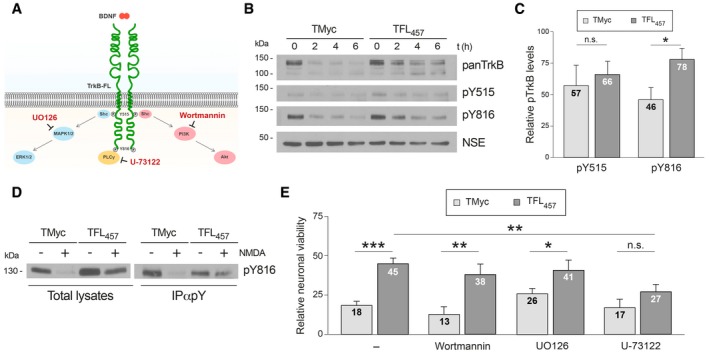Figure 3. TrkB‐FL preserved by TFL457 action maintains Y816 phosphorylation and PLCγ‐dependent pathways required for neuroprotection.

-
ATrkB‐FL main signaling cascades with indication of anchoring residues, tested drugs, and their targets.
-
BEffect of TFL457 on Y515 and Y816 phosphorylation. Cultures preincubated with TMyc or TFL457 (25 μM, 30 min) were treated with NMDA (0–6 h) and analyzed with panTrkB or phosphospecific antibodies.
-
CQuantitation of pY515 and pY816. Mean ± SEM of normalized pY515 (n = 7) or pY816 (n = 4) levels obtained after NMDA treatment (2 h) is represented relative to those found in cells with the same peptide but no NMDA. Statistical analysis was performed by unpaired Student's t‐test (*P = 0.046; n.s. = non‐significant).
-
DAnalysis by immunoprecipitation of TFL457 effect on pY816 levels. Cultures preincubated and treated as before with NMDA (2 h) were immunoprecipitated with antibodies specific for phosphorylated tyrosine (pY). pY816 was analyzed by WB in immunoprecipitates.
-
ETFL457 effects on neuronal viability after inhibition of TrkB‐FL signaling. Cultures were preincubated (30 min) with inhibitors specific for PI3K (Wortmannin, 100 nM), MAPK/ERK (UO126, 300 nM), or PLCγ (U‐73122, 5 μM) before incubation with TMyc or TFL457 (25 μM, 30 min). Viability was established 4 h after NMDA treatment. Means ± SEM relative to untreated cultures are represented, and data were analyzed by ANOVA test followed by post hoc Tukey's HSD test (***P = 0.0001, **P = 0.009, *P = 0.02, n.s. = non‐significant, respectively, for TMyc vs. TFL457 in untreated or Wortmannin, UO126, or U‐73122‐treated cells; **P = 0.008 for untreated vs. U‐73122‐treated cells preincubated with TFL457; n = 5).
Source data are available online for this figure.
